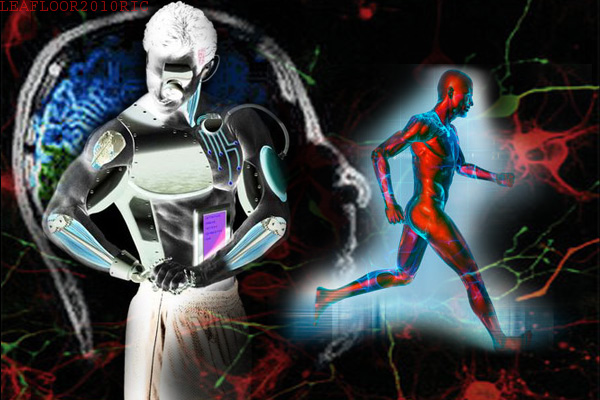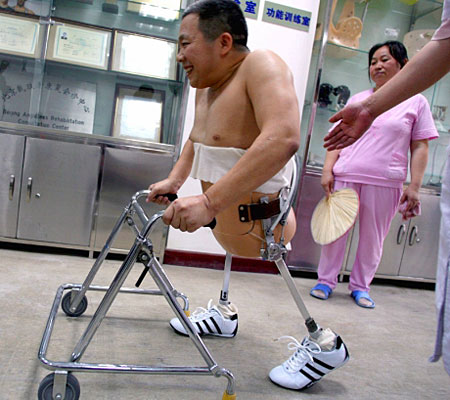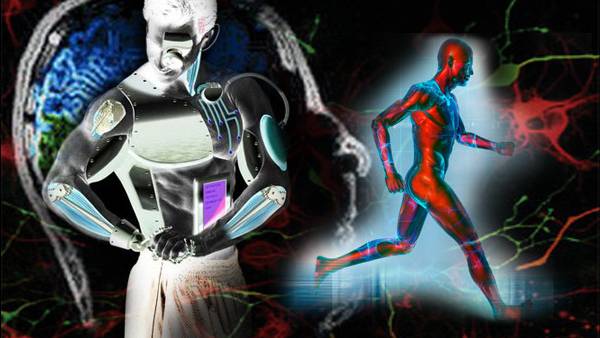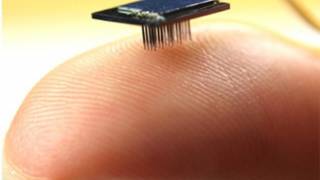Brain chips could help paralysed patients
Source: telegraph.co.uk

Engineers are developing the technology, which employs tiny microchips to sense nerve messages, decode the signals, and turn thought into movement.
They hope within five years to be offering patients with damaged spinal cords robotic devices that will enable them to move their arms or legs at will.
Spinal cord injuries cause paralysis by severing the connection between brain and limb.
Professor Rodrigo Quian Quiroga, heading a University of Leicester team working on the project, explained that such patients retain the ability to ’’think’’ commands from the brain.
He told The Engineer magazine: ’’The guy can see the object he wants to reach, the guy can have the intention to reach to the object, the brain can send a command to the arm - ’reach for this cup of tea’ - but the signal gets broken at the level of the spinal cord.
’’If we can get the signals from these neurons and interpret them with what is called decoding algorithms, then we can move a robot device placed on the paralysed arm.’’
Much of the technology is already available, he pointed out. Scientists have demonstrated ’’mind-reading’’ chips implanted into the brains of monkeys that can operate robot arms or move a cursor on a computer screen.
However none of these systems has involved wireless technology. Instead, a wire has been inserted through a hole drilled in the animal’s skull.
Transmitting information wirelessly from a brain chip is much more difficult. A single electrode may produce 30,000 data points, or items of information, per second, and the chip might contain hundreds of electrodes.
’’It’s a huge amount of data, so the bandwidth won’t be enough,’’ said Prof Quian Quiroga. ’’We’re trying to do some basic processing on the chip to reduce the bandwidth. So instead of 30,000 data points per second, maybe we’ll be sending 100 data points per second, or 1,000.’’
A more ambitious idea is not to use robotic devices but to replace the broken connection to the limb with an artificial link.
The brain chip would then send signals to an implanted stimulator in the spinal cord. This would generate electrical impulses to make muscles contract and move paralysed limbs.
But the scientists see a robotic system as more practical in the short term.
The project, part of a £1 million Government-sponsored research programme, also involves other groups from the University of Newcastle and Imperial College London.
Article from: Telegraph.co.uk

"Peng Shulin was cut in half after getting run over by a truck in 1995, and lost the lower half of his body. Doctors did skin grafts to seal up his torso, but he has been bed-ridden for years — until now. Scientists at the Chinese Rehabilitation Research Center created a kind of plastic housing for his torso that is fitted with two bionic legs (and some cool Adidas shoes as well, apparently), and he has been using the device with a modified walker." Source
The First Bionic Man
Video from: YouTube.com
Man Controls Robotic Hand with Mind
Video from: YouTube.com
Also tune into:
Kevin Warwick - "I, Cyborg": Implants, RFID, Microchips & Cybernetics
Michael Tsarion - New Technology: Possibility or Danger?
John Lash - Artificial Technomania of the Archons






















